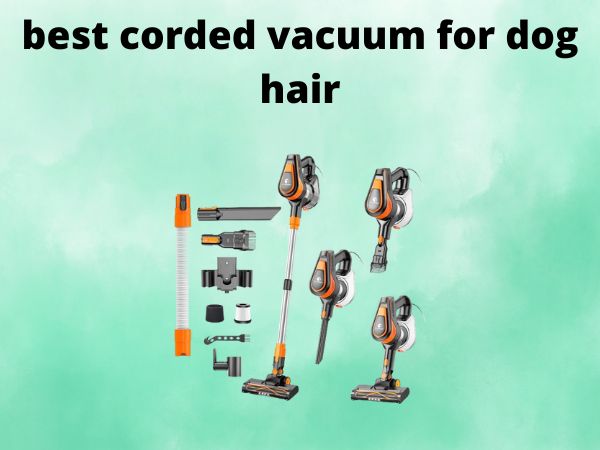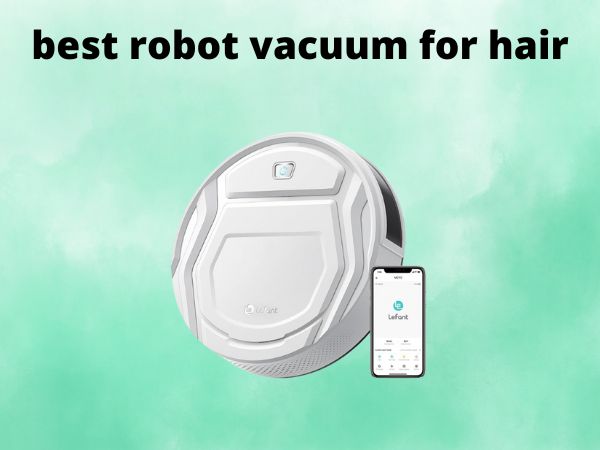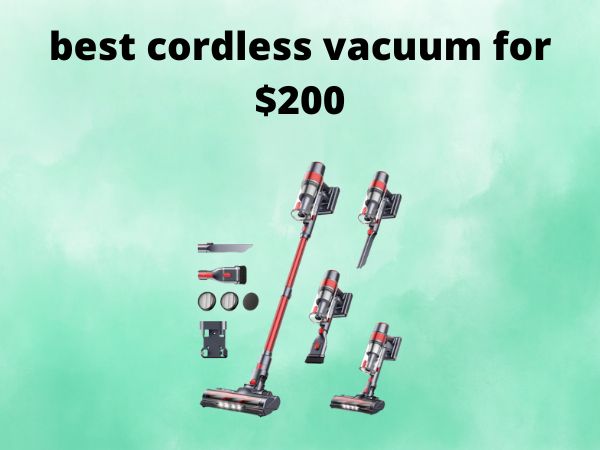How to Get a Sock Out of a Vacuum Hose [Your Complete Rescue Guide]
We’ve all been there – you’re cleaning up the bedroom, the vacuum is humming along nicely, and suddenly… thunk. That unmistakable sound of something getting sucked up that definitely shouldn’t have been. And nine times out of ten, it’s a sock. Now you’re standing there, vacuum in hand, wondering how on earth you’re going to fish that fabric prisoner out of your cleaning machine’s belly.
Don’t panic! Getting a sock out of a vacuum hose isn’t rocket science, but it does require the right approach. Whether you’re dealing with a tiny ankle sock or a thick winter boot sock, I’ll walk you through several proven methods to rescue your wayward hosiery without damaging your vacuum or losing your sanity.
Table of Contents
Why Do Socks Get Stuck in Vacuum Hoses?
Before we dive into the rescue mission, let’s understand why socks seem to have a magnetic attraction to vacuum cleaners. It’s not just bad luck – there’s actually some science behind this frustrating phenomenon.
The Physics Behind the Problem
When your vacuum creates suction, it’s essentially creating a pressure difference between the inside of the hose and the outside air. This pressure difference can be incredibly strong – strong enough to lift a bowling ball in some cases! When a lightweight, flexible object like a sock gets caught in this airflow, it becomes like a parachute in reverse.
The sock’s fabric catches the air, creating drag, while the suction pulls it forward. But here’s where things get tricky: vacuum hoses aren’t perfectly straight. They have curves, bends, and sometimes narrower sections. When a sock hits one of these bottlenecks, it can crumple up and create its own blockage, essentially becoming wedged in place.
Common Scenarios That Lead to Sock Entrapment
You might be wondering how that sock ended up in your vacuum in the first place. Here are the usual suspects:
The classic “laundry day disaster” happens when you’re vacuuming around the bedroom and don’t notice that rogue sock hiding under the bed or behind the dresser. Before you know it, whoosh – it’s gone.
Then there’s the “helpful kid” scenario. Children love to “help” with cleaning, and sometimes their enthusiasm leads to them feeding various items into the vacuum, including their own socks.
Don’t forget about the “static cling surprise.” Sometimes socks stick to bedsheets or curtains due to static electricity, and when you vacuum nearby, the suction is strong enough to pull them right off and into the hose.
Safety First: What You Need to Know Before Starting
Before you start your sock rescue operation, let’s talk safety. I know you’re eager to get that sock out, but taking a few precautions now can save you from bigger headaches later.
Turn Off and Unplug Your Vacuum
This might seem obvious, but I’m going to say it anyway: always turn off and unplug your vacuum before attempting any kind of extraction. The last thing you want is for the vacuum to accidentally turn on while your hand is inside the hose. Trust me, that’s not a mistake you want to make twice.
Even if your vacuum has an on/off switch, unplug it from the wall. Some vacuums have sensitive switches that can be triggered by movement or vibration, and you don’t want any surprises during your rescue mission.
Gather Your Tools
Depending on which method you choose, you might need some basic tools. Here’s what I recommend having on hand:
A wire coat hanger (the kind from the dry cleaner works perfectly), a flashlight or phone light to see inside the hose, rubber gloves for better grip and hygiene, and a pair of needle-nose pliers for extra grabbing power.
You might also want some compressed air (like the cans used for cleaning keyboards), a plumbing snake if you have one, and plenty of patience – this isn’t always a quick fix!
Method 1: The Gravity and Shake Technique
Let’s start with the simplest approach. Sometimes, the easiest solution is the best solution, and gravity can be your best friend when it comes to sock extraction.
Step-by-Step Instructions
First, disconnect the hose from your vacuum cleaner. Most hoses have a simple twist-and-pull mechanism, but check your user manual if you’re not sure how yours detaches.
Hold the hose vertically with the end that was connected to the vacuum pointing up. Give it a gentle shake – not too vigorous, just enough to encourage movement. You might hear the sock sliding around inside.
Now flip the hose so the other end is pointing up and repeat the process. Sometimes the sock needs to slide to a wider part of the hose before gravity can do its job effectively.
Try holding the hose at different angles – 45 degrees, completely horizontal, then back to vertical. Think of it like one of those wooden puzzle games where you have to get the ball bearing into the right hole.
When This Method Works Best
The gravity method works particularly well with lightweight socks like thin ankle socks or dress socks. It’s also most effective when the sock hasn’t traveled too far into the hose and isn’t completely wedged in place.
If you can hear the sock moving around when you shake the hose, that’s a good sign that this method might work. However, if the sock feels completely stuck or you can’t hear any movement, don’t waste too much time on this approach – move on to method two.
Method 2: Using a Coat Hanger or Wire Tool
When gravity fails, it’s time to get a little more hands-on. A coat hanger can become your best friend in this situation – it’s like a fishing rod for vacuum hoses.
Creating Your Retrieval Tool
Take a wire coat hanger and straighten it out, but leave a small hook at one end. You want about a 2-3 inch hook – big enough to grab onto fabric, but not so big that it won’t fit through the hose.
Make sure the hook is smooth and doesn’t have any sharp edges that could tear the sock or damage the inside of your vacuum hose. If needed, you can wrap the hook end with a bit of tape to make it smoother.
The Hooking and Pulling Process
Insert the straight end of your coat hanger tool into the hose opening. Use your flashlight to peer into the hose if possible – you want to see what you’re doing rather than just fishing around blindly.
Gently probe around until you feel the sock. This part requires patience and a delicate touch. You’re not trying to spear the sock; you’re trying to hook onto it gently.
Once you’ve hooked the sock, resist the urge to yank it out quickly. Pull slowly and steadily. If you feel resistance, stop and try repositioning your hook. Sometimes you need to grab a different part of the sock or approach from a different angle.
If the sock starts to come but then gets stuck again, don’t panic. Gently work it back and forth, like you’re working a cork out of a wine bottle. The key is persistence, not force.
Method 3: The Reverse Suction Approach
Sometimes the best way to get something out is to use the same force that got it in there in the first place – just in reverse. Many vacuum cleaners have a way to reverse their airflow, turning your sucker into a blower.
How to Safely Reverse Your Vacuum’s Airflow
Check your vacuum’s user manual to see if it has a reverse or blow function. Some vacuums have a specific setting for this, while others require you to move a hose connection to a different port.
If your vacuum doesn’t have a built-in reverse function, don’t despair. You can create the same effect by connecting the hose to the exhaust port of your vacuum instead of the suction port. Most vacuums blow air out somewhere – you just need to find where and figure out how to connect your hose there.
Blowing the Sock Out
Once you’ve got your reverse airflow set up, point the hose end away from yourself and anything breakable. You don’t know how fast that sock is going to come flying out!
Turn on the vacuum and let the reverse airflow do its work. You might need to try different angles and positions. Sometimes tilting the hose or giving it a gentle shake while the air is blowing can help dislodge a stubborn sock.
Be patient with this method. It might take several minutes of airflow to work the sock loose, especially if it’s been compressed or is caught on something inside the hose.
Method 4: Compressed Air Solution
If your vacuum doesn’t have a reverse function, compressed air can be an excellent alternative. This method gives you more control over the air pressure and direction.
Using an Air Compressor
You can use either a small can of compressed air (like those used for cleaning computer keyboards) or a larger air compressor if you have access to one. The canned air is usually sufficient for most sock extraction jobs.
Insert the nozzle of your compressed air into one end of the hose and seal around it as best you can with your hands or a towel. You want to direct as much air pressure as possible into the hose rather than letting it escape around the nozzle.
Give short bursts of air rather than one long continuous blast. This pulsing action is often more effective at dislodging stuck objects than constant pressure.
Safety Considerations with Compressed Air
Never point compressed air at yourself or anyone else. That sock is going to come out with some force, and you don’t want it hitting anyone in the face.
Be careful with the pressure settings if you’re using a larger air compressor. Too much pressure could damage your vacuum hose or send the sock flying with dangerous force. Start with lower pressure and increase gradually if needed.
Always wear safety glasses when using compressed air, especially from larger compressors. You never know what else might come flying out of that hose along with the sock.
Method 5: The Plumbing Snake Technique
For those really stubborn socks that just won’t budge, a plumbing snake (also called a drain auger) can be your secret weapon. This tool is designed to navigate through pipes and grab onto blockages – perfect for vacuum hose situations.
When to Use a Plumbing Snake
Consider the plumbing snake method when other approaches have failed, especially if the sock is deep inside a long hose or seems to be completely wedged in place. This tool gives you the reach and flexibility that a coat hanger might not provide.
Plumbing snakes are also great when you’re dealing with thicker socks or multiple socks that have created a larger blockage. The snake’s coiled design can sometimes grab onto and pull out more material than a simple hook.
Proper Snake Technique
Feed the snake into the hose slowly and gently. Don’t force it – you want to navigate around any curves or bends in the hose without damaging anything.
When you reach the sock, try to work the snake’s end around or through the fabric. Some snakes have a corkscrew tip that can grab onto material very effectively.
Once you’ve got a good grip, pull slowly and steadily. If you feel the sock moving but then getting stuck again, try rotating the snake while pulling. Sometimes this twisting motion can help work the sock through tight spots.
What NOT to Do: Common Mistakes to Avoid
Before we continue with more solutions, let’s talk about what you absolutely should not do when trying to extract a sock from your vacuum hose. These mistakes can turn a simple problem into an expensive repair job.
Never Use Sharp Objects
I know it’s tempting to grab a knife, scissors, or other sharp tool to try to cut or spear the sock, but don’t do it! You’re almost guaranteed to puncture or tear your vacuum hose, which will cost way more to replace than any sock is worth.
Sharp objects can also get stuck themselves, turning your one-item problem into a two-item disaster. Plus, if you’re not careful, you could end up cutting yourself while trying to maneuver in the confined space of the hose.
Avoid Excessive Force
Patience is your friend here. Yanking, pulling hard, or trying to force the sock through a tight spot will likely just compress it more and make it even more stuck. You might also damage the hose or the sock itself.
Remember, that sock went in relatively easily when the vacuum was running – it should come out just as easily with the right technique. If you’re meeting a lot of resistance, try a different approach rather than using more force.
When to Call a Professional
Sometimes, despite your best efforts, that sock just isn’t coming out. So when do you throw in the towel and call for backup?
If you’ve tried multiple methods and the sock still won’t budge, it might be time to take your vacuum to a repair shop. Professional vacuum technicians have specialized tools and experience that can make quick work of even the most stubborn blockages.
Also, if you suspect you’ve damaged the hose during your extraction attempts, or if the vacuum isn’t working properly after removing the sock, professional help is definitely worth the investment.
Consider the cost factor too. If your vacuum is older or wasn’t very expensive to begin with, the cost of professional repair might exceed the value of the machine. In that case, it might make more sense to replace the hose or even the entire vacuum.
Prevention Tips: How to Avoid Future Sock Incidents
An ounce of prevention is worth a pound of cure, as they say. Here are some strategies to keep your socks and your vacuum living in harmony.
Pre-Vacuuming Inspection
Make it a habit to do a quick scan of the area before you start vacuuming. Look under beds, behind furniture, and in corners where socks like to hide. It takes an extra minute or two, but it can save you hours of extraction work later.
Pay special attention to laundry areas and bedrooms where socks are most likely to be lurking. Static electricity can cause socks to stick to unexpected places, so check curtains, bedsheets, and other fabric items.
Proper Vacuuming Techniques
Slow down your vacuuming pace. Many sock incidents happen when people are vacuuming quickly and don’t notice small items until it’s too late. Take your time and pay attention to what you’re vacuuming up.
Use your vacuum’s attachments appropriately. The main floor tool is designed for carpets and large surfaces. When cleaning around furniture or in tight spaces, switch to a smaller attachment that gives you better control.
Troubleshooting Other Common Vacuum Blockages
While we’re on the topic of vacuum blockages, let’s briefly discuss other common items that might find their way into your vacuum hose and how to deal with them.
Small toys, hair ties, and jewelry can often be removed using the same techniques we’ve discussed for socks. The coat hanger method works particularly well for items with holes or loops that you can hook onto.
For paper items like tissues or small pieces of paper, the reverse suction method is usually most effective. These items are lightweight and will blow out easily once you get some airflow going in the opposite direction.
Larger items like scarves or washcloths might require the plumbing snake approach, as they can create significant blockages that need more aggressive extraction methods.
Frequently Asked Questions
Q1: Can leaving a sock in my vacuum hose damage the motor? A: Yes, leaving a sock in your vacuum hose can potentially damage your motor over time. The blockage forces your motor to work harder, which can lead to overheating and premature wear. It’s best to remove the sock as soon as possible to prevent any long-term damage to your vacuum cleaner.
Q2: What should I do if the sock tears while I’m trying to remove it? A: If the sock tears during removal, don’t panic. Use tweezers or needle-nose pliers to grab the remaining pieces. Work slowly and methodically to remove all fabric remnants. Sometimes torn pieces are actually easier to remove because they’re smaller and more flexible than the whole sock.
Q3: Is it safe to use water to help remove a stuck sock? A: No, you should never use water inside your vacuum hose. Water can damage the motor and electrical components of your vacuum, potentially creating a safety hazard. Stick to dry removal methods only, and make sure your vacuum is completely dry before using it again if any moisture accidentally gets inside.
Q4: How can I tell if there’s still part of the sock left in my hose? A: After removal, test your vacuum’s suction by holding your hand over the hose opening. If the suction feels weak or you hear unusual whistling sounds, there might still be fabric remnants inside. You can also shine a flashlight through the hose to visually inspect for any remaining material.
Q5: What’s the most common mistake people make when trying to remove a sock from their vacuum? A: The biggest mistake is using too much force too quickly. Many people panic and start yanking or using sharp objects, which often makes the problem worse and can damage the vacuum. The key is to stay calm, work methodically through different techniques, and be patient with the process.
Conclusion
Getting a sock out of a vacuum hose doesn’t have to be a nightmare scenario. With the right approach and a little patience, you can rescue your wayward hosiery and get your vacuum back to working order. Remember to always prioritize safety by unplugging your vacuum before starting any extraction work.
Start with the simplest methods – gravity and gentle shaking – before moving on to more involved techniques. The coat hanger method works for most situations, while reverse suction and compressed air are excellent for stubborn blockages. For the really tough cases, don’t hesitate to use a plumbing snake or call in professional help.
Most importantly, remember that prevention is your best strategy. A quick pre-vacuuming inspection can save you from most sock-related vacuum disasters. Take your time while cleaning, pay attention to what you’re vacuuming up, and your socks and your vacuum will coexist peacefully.
The next time you hear that telltale thunk of something being sucked up that shouldn’t be, you’ll be ready with the knowledge and confidence to handle the situation like a pro!





